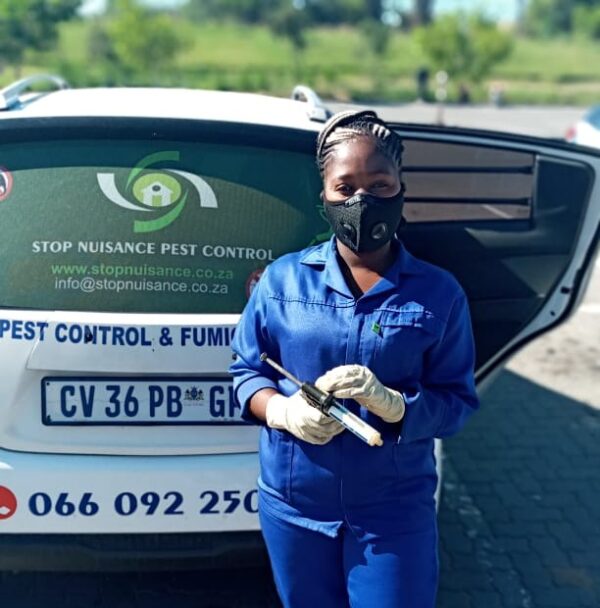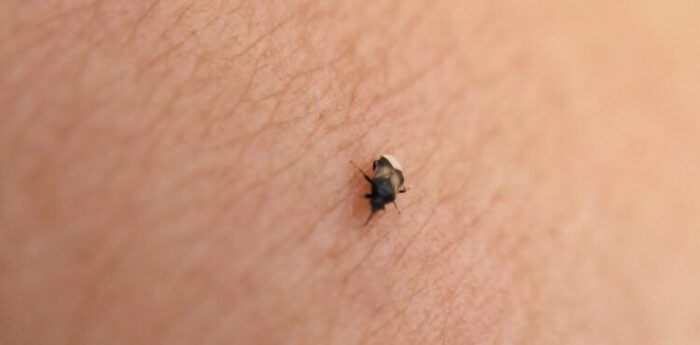As the warm weather approaches, homeowners across the country begin to notice the emergence of tiny black bugs leaving itchy bites on their skin. While just minor nuisances to some, these minuscule biting pests can quickly become a major source of frustration and discomfort if left unchecked. In this article we talk about Tiny Little Black Bugs That Bite and Itch.
Understanding what types of bugs you’re dealing with is the first step in identifying an infestation and implementing the proper treatment to eliminate them. Let’s take a closer look at some of the most common tiny black biting bugs and how to get rid of them.
Table of Contents
Black Dust Mites

While not technically insects, dust mites are one of the biggest culprits behind itchy bite-like rashes and allergic reactions in homes. These microscopic, translucent bugs feed on the dead skin cells found in dust around living areas.
Their bites leave small, red bumps that can appear in lines or in clusters. Severe dust mite infestations can trigger respiratory issues like asthma in addition to persistently itchy skin welts.
Treating Dust Mites:
- Use dust-proof covers on pillows/mattresses to deprive mites of food sources
- Vacuum and clean frequently with a HEPA filter vacuum
- Lower indoor humidity with dehumidifier or AC
Flea Bites
Despite their tiny size, fleas are notorious biting pests that can infest homes and torment both humans and pets alike. Often appearing as pepper-like black dots, fleas survive on blood meals from hosts. Their bites result in small, extremely itchy red bumps or wheals on the skin.
Flea bite symptoms can range from mild itchiness and rashes to more severe allergic reactions like inflamed welts. Heavy infestations can lead to anemia from blood loss in pets.
Eliminating Fleas:
- Vacuum thoroughly and dispose of sealed bags immediately
- Treat pets and living areas with flea spray, powders or foggers
- Use flea combs/baths on pets and launder bedding frequently
Bed Bugs
While usually more reddish-brown in color, bed bugs that have not yet fed can appear as tiny black specks against sheets or mattresses. These tenacious pests latch on and take prolonged blood meals from sleeping hosts, leaving telltale lines of swollen, itchy bite marks in the morning.
Bed bug bites cause rashes, welts, hives or even allergic reactions in some individuals. Even worse, infestations can quickly spiral out of control, forcing households to undertake extensive extermination efforts.
Fighting Bed Bugs:
- Thoroughly vacuum and launder all bedding/clothing/upholstery
- Use mattress covers and interceptor traps to detect and isolate bed bugs
- Call professional exterminators for advanced heat/chemical treatments
Chiggers
Commonly found in grassy, outdoor areas, chiggers are tiny black bugs known for leaving behind excruciating itchy welts from their bites. Easily transferable from tall grass or even pets, these mites latch onto hosts and inject enzymes that break down skin cells to feed on.
Chigger bites often appear as clusters of red, swollen bumps surrounded by redness and inflammation. Heavy infestations can cause severe itching, rashes, burning sensations and intensely irritated skin that can lead to infections from excessive scratching.
Removing Chiggers:
- Take a hot, soapy shower immediately after exposure
- Apply over-the-counter anti-itch creams or lotions to affected areas
- Launder all clothing/fabrics and vacuum thoroughly to remove any chiggers
Black Ants
While not usually regarded as biting insects, some varieties of smaller black ants like fire ants can and will bite humans if threatened or disturbed. Their bites release venom that causes painful, itchy red bumps or pustules that can become fluid-filled blisters in severe cases.
Ants inside the home are not only an annoyance – they can potentially contaminate food sources, damage structures by burrowing, and lead to painful bites if colonies are disrupted.
Getting Rid of Biting Ants:
- Locate and eliminate visible ant trails or nests with bait/insecticide
- Seal cracks and entry points to keep ants from getting inside
- Use preventative treatments and baits around the home’s perimeter
Easing and Preventing Itchy Bug Bites
No matter what type of tiny black biting bugs triggered the itchy skin welts and rashes, it’s important to treat the symptoms as quickly as possible to prevent excessive scratching and potential infections.
Over-the-counter anti-itch creams with pramoxine, menthol or camphor can provide effective relief and promote faster healing. Oral antihistamines like Benadryl or Zyrtec can reduce swelling and discomfort as well.
For severe or worsening bite reactions, medical intervention may be required in the form of prescription steroid creams or even injectable treatments.
Taking preventative measures is crucial to avoid bug bites and infestations in the first place:
- Use insect repellents with DEET, Picaridin or other EPA-approved ingredients
- Frequently launder and change bedding and clothing
- Vacuum and clean living areas thoroughly on a regular basis
- Seal cracks in walls/floors and repair any entry points in the home
- Maintain humidity levels below 50% to deprive insects of moisture
By understanding the different types of tiny black bugs that can leave irritating bites, homeowners are better able to accurately identify the pest and take quick, decisive action to eliminate the infestation and ease symptoms.
Catching and addressing bug problems early is essential before they spiral out of control. With proper treatment of existing bites and preventative measures, any household can become an itch-free zone this summer season!
Common Symptoms of Tiny Black Bug Bites
While the particular bug species may vary, most tiny black biting bugs tend to leave behind itchy, swollen red bumps or rashes on human skin. Potential symptoms can include:
Red, Swollen Bite Marks
The most obvious clue that tiny biting bugs have made your skin their next meal. Small, raised red bite marks are the first telltale signs before other reactions set in.
Itchiness and Irritation
Nearly all bug bite reactions involve inflammation that triggers intense itchiness localized around the bite areas. The severity of itching can vary greatly between individuals.
Welts and Hives
Some individuals experience bug bites as raised swollen welts or linear rashes from an insect dragging across the skin. Some may even develop widespread hives from an allergic reaction.
Pimple-Like Bumps/Blisters
Many biting bug bites start as small, pimple-like bumps that can progress into fluid-filled blisters or scabs as the body reacts to the irritant.
Redness/Swelling Around Bites
The inflammatory response to bites frequently includes widespread redness, swelling, irritation and a burning sensation around the central bite marks.
Excessive Scratching Leads to Infections
Unfortunately, the itchiness associated with bug bites leads many to scratch excessively which can rupture the skin and allow secondary infections to set in.
Anaphylaxis and Respiratory Issues
While extremely rare, some individuals may experience potentially life-threatening allergic reactions like anaphylaxis to bug bites or saliva. Asthma attacks and breathing issues are also possible for sensitive individuals.
Treating bug bites promptly with cold packs, OTC creams and oral antihistamines can help limit the severity of reactions and complications. Signs of severe reactions like fever, excessive swelling or infections may require medical treatment. I sincerely hope you find this “Tiny Little Black Bugs That Bite and Itch” article helpful.

With over 5+ years of experience in pest control and a PhD in Entomology, our author brings a blend of scientific knowledge and practical expertise to Pestifier.com. Passionate about creating pest-free environments, they provide effective tips and strategies for managing and preventing pest infestations. Connect on Facebook for the latest updates and insights.

